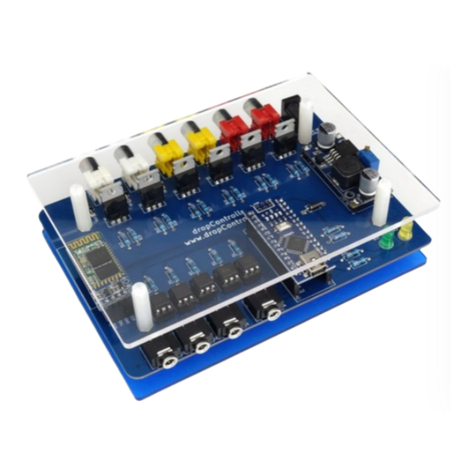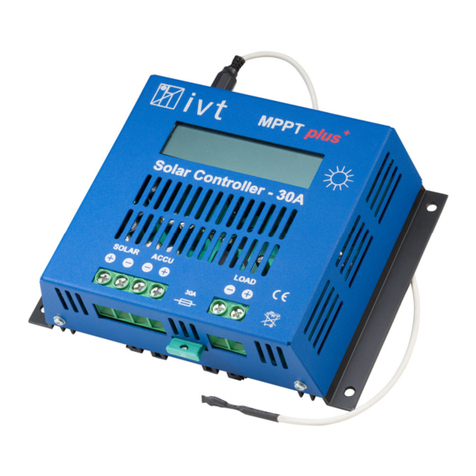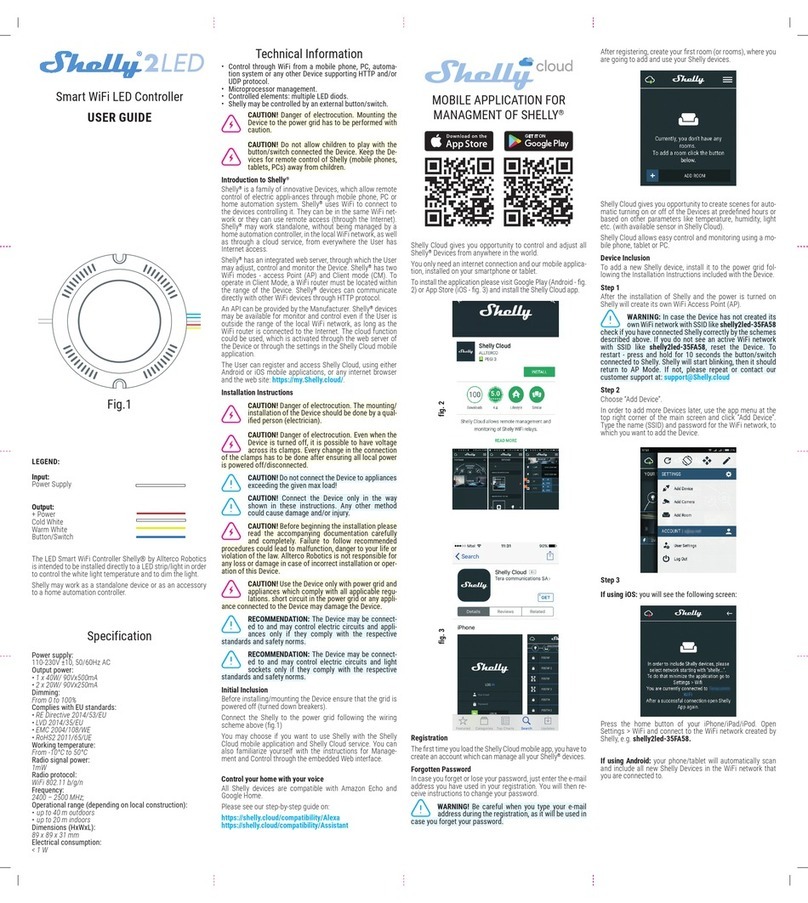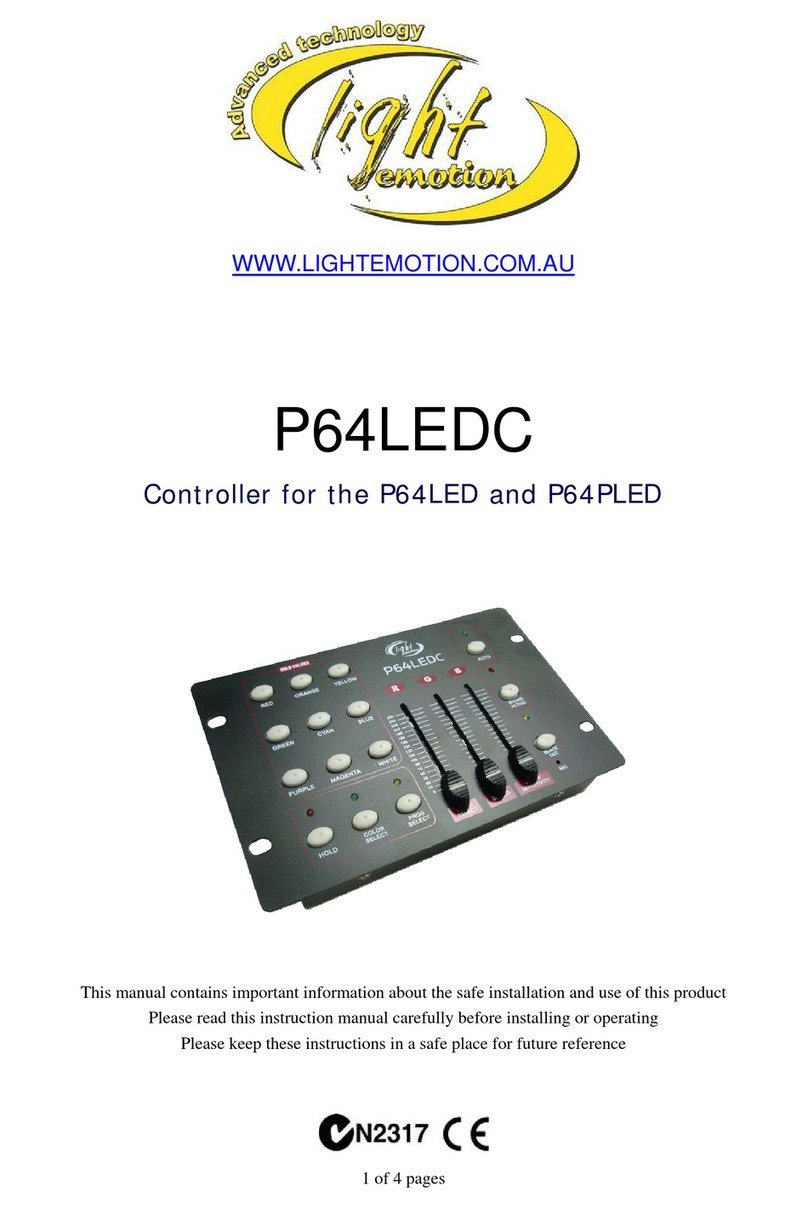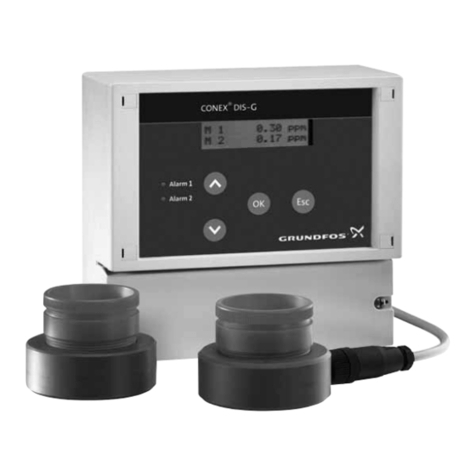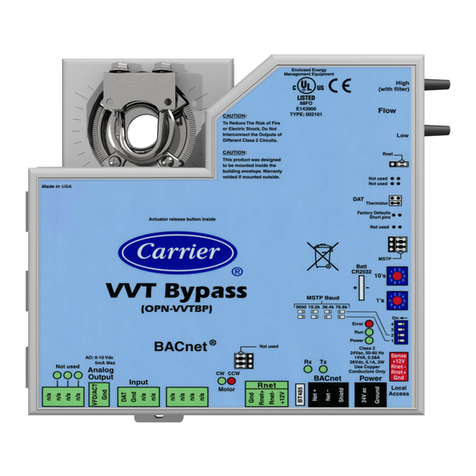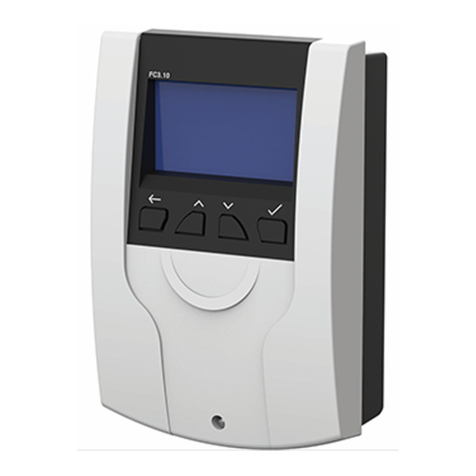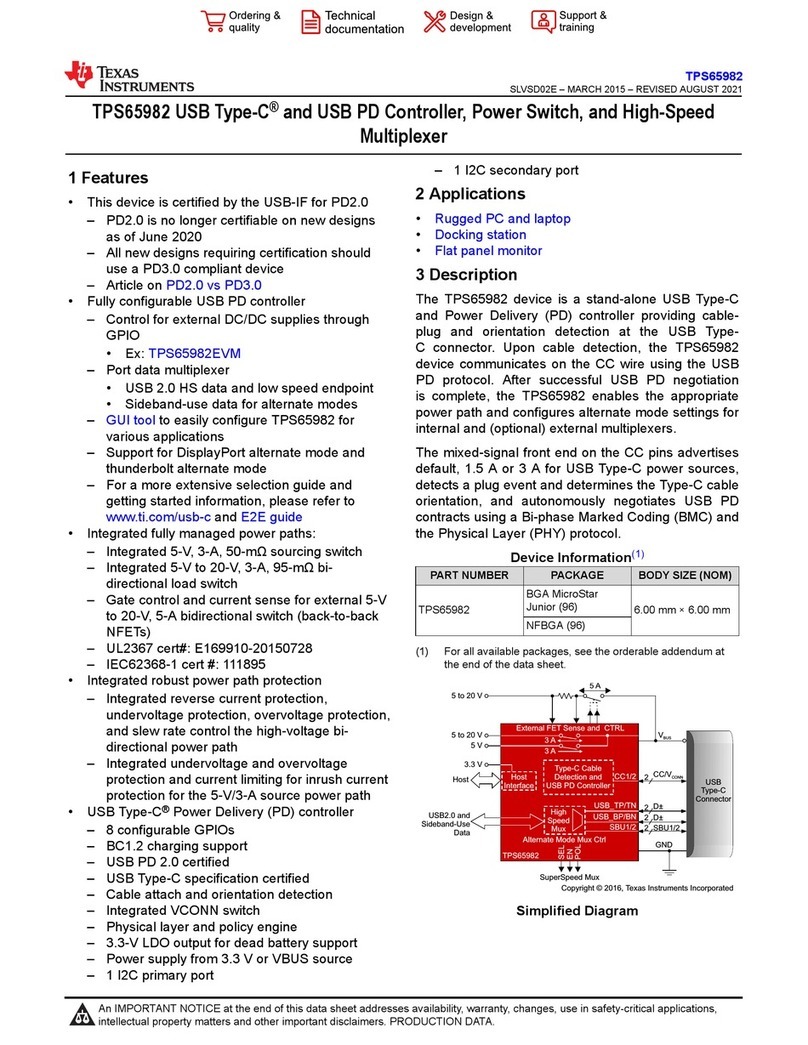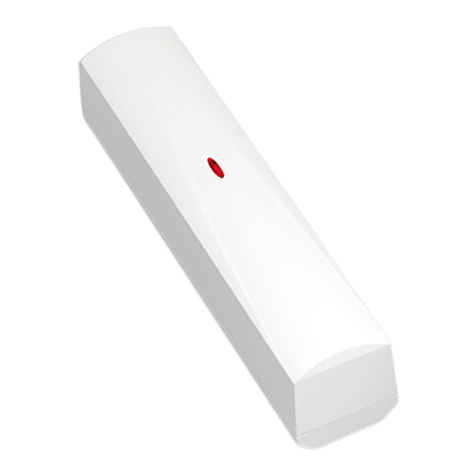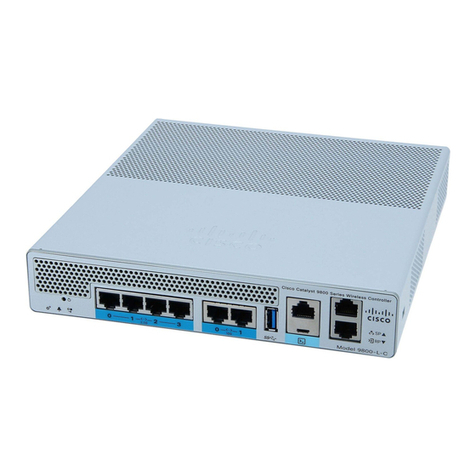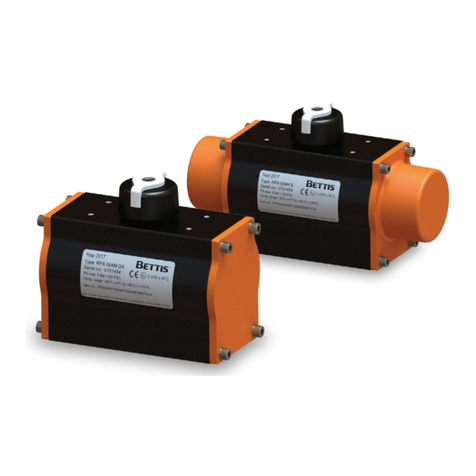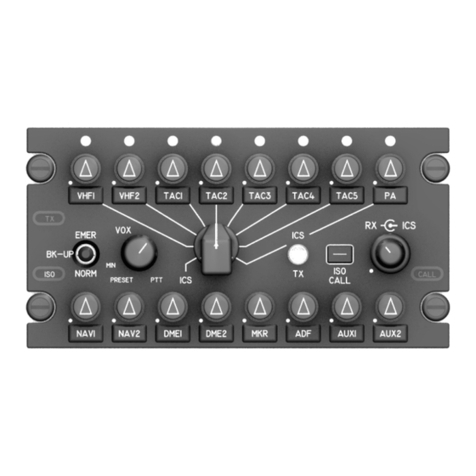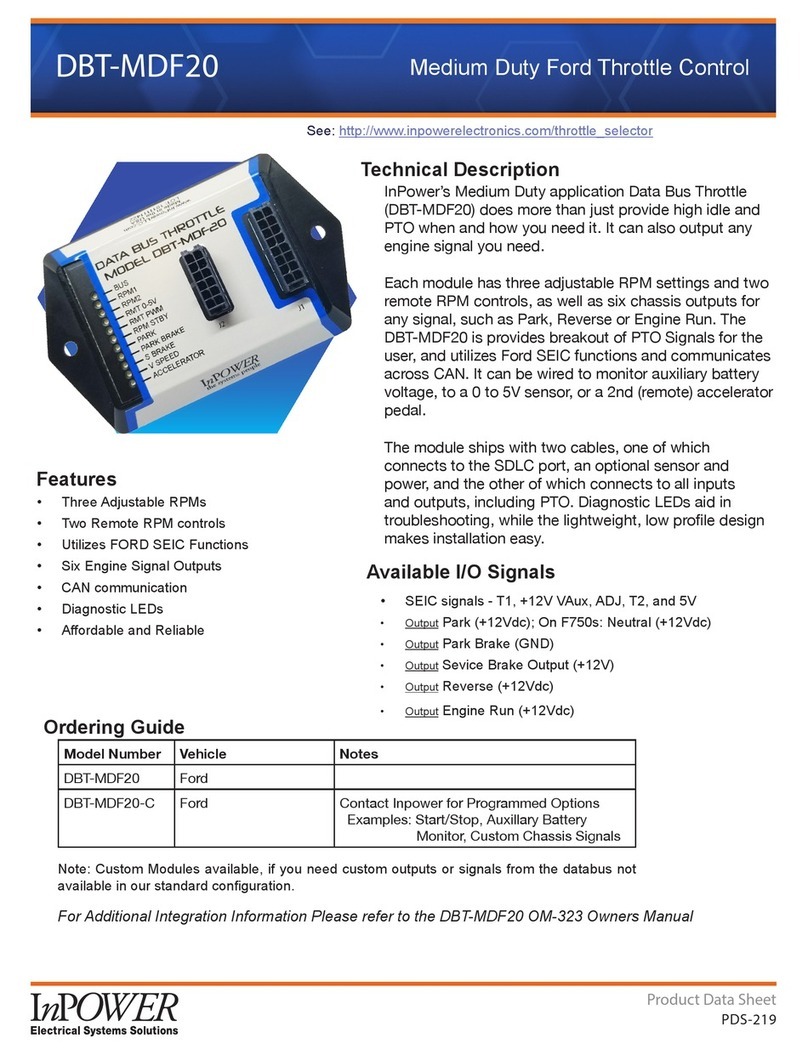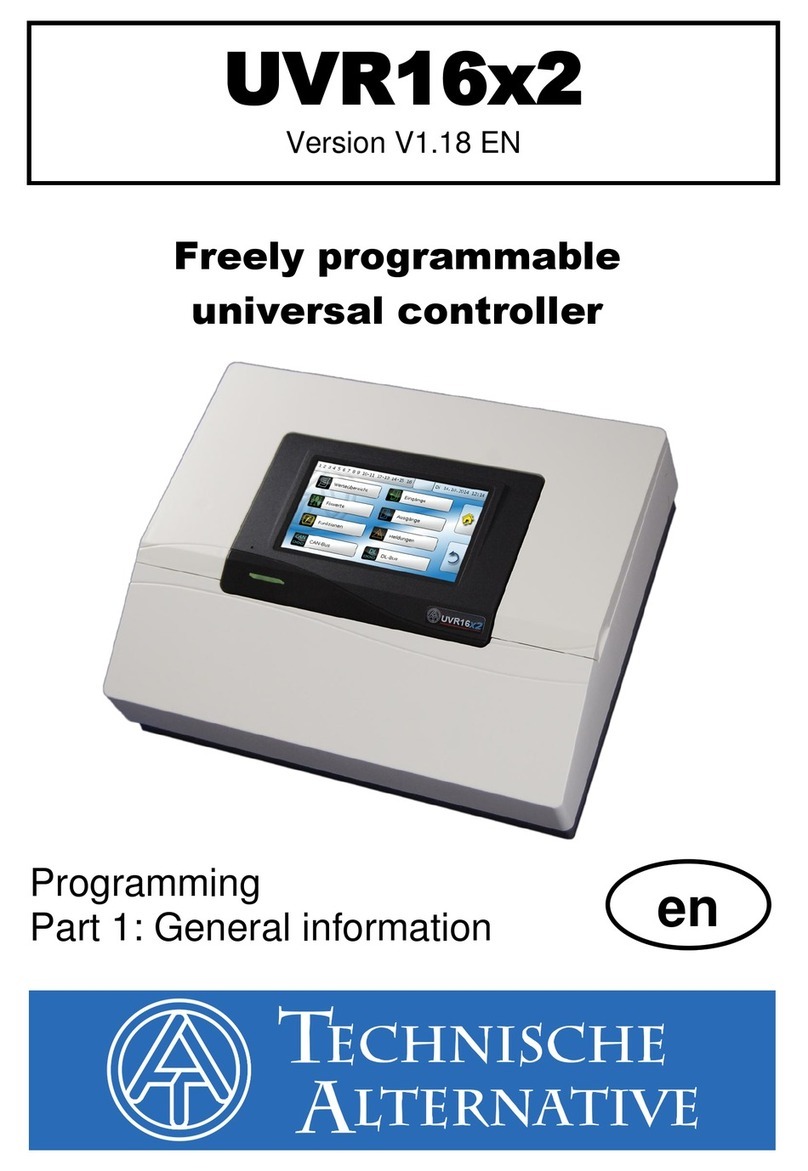Chiltrix CXRC1 User manual

Table of Contents
Operation Overview ……………………………………………………………..3
Theory of Operation & Application Notes ………………………..…..4
Installation Overview …………………………..……………………………....5
Fittings & Components Installation ……………………………………….6
Piping & Wiring Diagrams ………………………………………………….....9
Sensors Installation……………………………………………………………….10
Sensor Location …………………………………………....……………………..12
Controller Operation …………………………………………………………....13
Condensation Safety & Alarm Output ……………………………...…15
Testing & Troubleshooting …………………………………………………..16
Determining Set Points / Calculators …………………………………. 17
Augmentation ……………………………………………………………………..22
2

CXRC1 Operation Overview
Radiant cooling is the most efficient and comfortable method of
cooling available for users is a dry or moderate climate and be highly
beneficial even in humid climates.
However, if a radiant surface is operated below the dew point,
unwanted condensation will be produced. A fast acting radiant
cooling controller designed to prevent this, such as CXRC1, is
required.
The CXRC1 is designed to be added to any existing radiant heating
controller to enable the additional function of radiant cooling. The
existing radiant controller will need to have thermostat(s) that are
capable of calling for cooling. These can be added to nearly any
controller.
Below is a logical topology of the CXRC1 radiant cooling controller:
3

Theory of Operation
The CXRC1 monitors the indoor dew point and compares it to the water temperature
entering the supply manifold.
There is a cross-connect between the supply and return lines, and a motorized 3-way
mixing valve that can mix water returning from the radiant system back into the supply,
before entering the supply manifold, to quickly raise the temperature as needed to
adjust the water temperature so that it will be above the dew point or above a pre-set
delta to the dew point. This helps ensure that water entering the radiant system is at a
temperature that will not produce condensation.
Application Notes:
The CXRC1 is not a radiant controller, it is an add-on to most any Brand or model
standard radiant controller, to allow you to operate a radiant heating system In a cooling
mode without condensation issues.
BEFORE ORDERING OR INSTALLING THE CXRC1, PLEASE CONSULT WITH CHILTRIX
TECHNICAL SUPPORT DEPT. TO VERIFY THAT YOUR RADIANT CONTROLLER IS
COMPATIBLE. YOU WILL NEED TO PROVIDE THE MAKE AND MODEL, AND A PDF
MANUAL OR A LINK TO THE MANUAL ONLINE FOR YOUR RADIANT CONTROLLER.
The radiant controller will need to have one or more thermostats that have the
capability of cooling function. You may need to replace or add to your current
thermostats.
2. This radiant cooling controller is designed to monitor indoor dew points and adjust the
temperature of the water (or water/glycol) entering the radiant system such that the
radiant surfaces do not drop below the dew point. This can prevent condensation
(accidental dehumidification) which could cause water damage or inconvenience.
3. The system is ordered as follows: CXRC1-4 has 4x RJ45 Ethernet ports, can connect to
one to four dew point sensors. CXRC1-8 has 8x RJ45 Ethernet ports, can connect to one
to eight dew point sensors. DPX1 Dew Point Sensors are ordered separately.
4. All dew point sensors connect to the CXRC1 via CAT6 cable (supplied by installer). Up
to 150 ft. cabling distance is allowed per sensor.
5. ASHRAE requires an indoor humidity </= 60% RH to prevent EMC, corrosion, or mold.
In some climates, you will need a dehumidifier to ensure this. A radiant cooling system
cannot and will not dehumidify.
4

Installation Overview
1. READ THIS MANUAL IN IT’S ENTIRETY BEFORE PROCEDING.
2. Verify the thermostats used with the existing radiant heating
controller are capable of a cooling setting. If not, augment or
replace the thermostats. Consult with the radiant cooling controller
manual to see how to connect any new or additional thermostat or
call Chiltrix technical support for assistance. Radiant cooling control
can be configured to work with nearly all radiant controllers.
3. Install sensor well and PT100 sensor fitting.
4. Install the controller CXRC1.
5. Install supply-return cross connect and proportional mixing valve.
6. Install dew point sensors, run cabling, connect CAT6 cables to all
dew point sensors to the controller according to this manual.
7. Connect all wiring according to this manual.
8. Determine and install optional customer-provided alarm output
device.
9. Configure controller according to the Chiltrix radiant calculators
particularly using the “Surface temperature” tab.
10. Test system operation.
5

Installation of fittings
.
When installing any fittings, make sure that you use some type of
sealant on all threads. Regular Teflon tape will work fine for sealant.
The included sensor fitting is 1 ¼ “ FNPT, you can adapt to this as
needed for your PEX or copper fittings. The fittings on the included
3 way valve are 1”FNPT.
Above is an image of the sensor fitting, a Tee-adapter from 1 ¼” to
the ½”. This size fitting is used to create a near-0 pressure drop
sensor fitting for the PT100 sensor.
6

A properly installed PT100 sensor assembly
Three-way mixing valve
7

Installation of Mixing Valve
When installing the 3 way valve please use Teflon tape on the
fitting ports to prevent any water leakage. The 3 way valve must be
installed with the white actuator on top as shown below. Secure the
valve to a mounting board if it is directly connected to PEX tubing on
all ends. The orientation of the position of the valve (0 to 1) at time of
install does not matter, it will be addressed later in the manual.
IMPORTANT NOTE
The mixing valve, cross connect piping, and PT100, MUST all be on
the manifold supply line and MUST be “upstream” of the pump(s)
as shown in the various diagrams of this manual.
Above, valve supported by copper pipe on 2 sides
8

Example Piping Diagram
Wiring Diagram
9

Mounting of the Controller and Dew Point Sensors
Mount the controller in a interior location near the mixing valve and PT100 temperature
sensor fitting, and away from any exposure to water or dirt. Mounting tabs are located on
the control box on each side. This location may be near the buffer tank, or near the
manifolds.
NOTE: neither the controller or dew point sensors are water proof. It’s also recommended
to consider access to a wall outlet (110-120vac). The controller is powered by a 110-120
wall outlet plug.
Sensors
Mount each sensor in each area where you wish to monitor the dew point. The sensors
have mounting tabs on each side just like the control box. The wire connector can go in two
different ways. First method is to drill a hole in the wall and slide the connector through the
back of the sensor box, it is an oval shaped hole. The short end of the housing “vents” can
also be pushed out with your fingers to run the sensor wire through if you wanted to mount
the sensor on the celling or along side a wall. Note these vents are designed to
“breakaway” so they are relatively fragile. Be careful and don’t break them by accident.
10

Sensor cabling is an installer-provided item. After determining the sensor
locations you will need to measure the length you need and then order or
make cable of the correct length with RJ45 connectors in order to connect
the sensors to the controller. You can have up to 4/8 sensors connected to
the controller according to which model was ordered, you can use as few as
one sensor according to your needs.
USE CAT6 CABLE
Dew Point Sensors
CAT6 Sensor Cabling
11

Location, Location, location –where to put the dew point sensors? So here
we may hear a lot about classical physics and the ideal gas laws, in
particular, Avogadro's Law and Fick’s Laws of Diffusion. Without going
deeper into this, these laws tell us that 1) humidity seeks equilibrium and
does not need the actual movement of in order to equalized across an area,
and 2) that, as counterintuitive as it may seem, a volume of air is lighter
when it has a higher humidity, and therefore rises. Don’t worry about which
law wins. In a cooler part of an enclosed space, RH will be higher because
the air can hold less moisture, in a warmer area the air can hold more water,
so the RH is lower. Neither have anything to do with the dew point unless
the actual (absolute) humidity changes.
Don’t worry about it or let the experts confuse you. Just locate the dew
point sensors in the area served by the radiant cooling surface, and
generally as near as practical to the surface that you are protecting from a
dew point issue. We are only concerned about the dew point and not RH in
this regard.
For most users, one or two dew point sensors, more or less central to the
area, based on common sense, per floor, is all that’s needed. If you use
radiant from the ceiling you can put the sensors higher on the wall, for floor
radiant it really does not matter.
One note –if you have a persistent source of new absolute humidity, like a
leaky pipe, fix it.
Another note –if you have a high cathedral type ceiling, this is a good
location to pull in air for your dehumidifier,
Dew Point Sensors
Proper Location
12

CXRC1 Controller Operation
The controller has firmware to read the sensors and control the valve
position, the end user will need to set a temperature dew point offset.
This temperature may the set by the user to automatically track the dew
point, or may be set to operate at some delta above or below the dew
point.
Note: In many cases the water temperature can be safely set below the
dew point. See the section on temperature selection.
Ex: If you set the controller at “+2F” the controller will operate with a
target temperature to the supply manifold as “dew point plus 2 degrees
Fahrenheit”.
The controller will cycle between two different menus as shown below.
13

CXRC1 Controller Operation Cont’d
In order to change any settings on the controller you will need to hold
down the menu button for about 5-10 seconds in order to enter into the
main menu.
Once in the main menu, you can select “Dew Pt Offset”, this setting is
the offset to which the controller will target the output water temp
based on the highest dew point read (the highest reading of any
individual sensor).
The dew point offset is a target in relationship to the dew point.
Example: if the offset is +4F and the highest dew point read from the
sensors is 54F then the controller will target an output temp of 58F. If
the setting is -4F and the sensors are reporting a dew point of 54F then
the target would be 50F.
The Dew Pt Offset is configurable to target an output water temp below
the dew point in cases where you have a sealed system and a known R
value between the surface of the water and the surface that is in contact
with the rooms air temperature. See temperature selection section.
14

Condensation Safety Precautions:
It is recommended that the CXRC1 be powered from the same circuit
as the pump(s) such that any power or circuit breaker problem that
stops power to the CXRC also disables the circulator pump(s).
Alarm Output
The CXRC1 has a low-amp (.2a) 5v alarm output that can be used
signal an error or loss of communication with dew point sensors. It is
recommended that this be connected to a small solid state relay that
can be set up to trigger a warning signal such as a bell or other alarm
to let you know of any failed sensor.
If the mixing valve fails to receive communications from the controller
but still has power, the mixing valve will move to full-recirculation as a
safety precaution.
15

Testing:
Run the system and pay close attention to the radiant surface temperatures and dew
point (see next page diagram) where unwanted condensation may occur and look for
any condensation. There should be no wetness at all. Temperatures should agree with
your projections within 1-2 degrees F, adjust as needed. Monitor this closely at various
temperatures and conditions after initial startup, until you are sure your settings are
sufficient.
Problem: Valve does not operate upon start up
Solution: Make sure your power wires are plugged in, if the controller LCD is not lit up
then the valve does not have power. Upon start up the valve will start at full
recirculation and then it will begin to modulate.
Problem: Valve is moving too much, too fast, too far, etc.
Solution: This is not exactly as it appears. This valve uses a gear reduction motor so the
valve manual positioner that you can see may appear to move a very large amount,
note that even an apparent full turn of the valve is only a small change to the actual
amount of in mixing/non-mixing adjustment applied.
Problem: I am getting unexpected condensation
Solution: Check your calculations for error, or there may be an error in your R-value
assumptions. If this cannot be corrected with adjustments on your own, please contact
Chiltrix technical support (advanced support dept.).
Testing & Troubleshooting
16

How To Select The
Proper Temperature Setting
For Maximum Capacity
In any case where there is uninsulated or exposed piping at any point
where condensation would be a problem, we suggest a setting of
dew point +2F. Likewise, if the thermal sandwich is not vapor tight and properly insulated,
use dew point +2. We suggest to properly insulate and use vapor tight taping or barrier to
allow a lower offset to dew point and therefore higher capacity.
If all piping is insulated, and the back side of the “thermal sandwich” is also insulated
well and vapor tight, a target below the dew point can be used to gain more cooling
capacity. The “thermal sandwich” refers to the radiant surface, and to what is behind it.
An example below shows a typical thermal sandwich on a ceiling. The same logic is to be
applied for floor or wall use.
PEX Tubing
Aluminum Transfer Plate
Drywall, Wood, etc.
Vapor-tight Insulation
Room, Air
Above, “thermal sandwich” shown as ceiling radiant.
For floor radiant, just turn it upside down.
In the above example, assuming the piping and all insulation is vapor tight and has an R-
value of at least as high as the sandwich section marked “drywall or wood”, the only
surface where condensation risk is presented is the drywall or wood surface (the
“radiant surface”.
The temperature target offset of the CXRC1 will be based on this surface and therefore
the water temperature target can be lower than the dew point. You can use our surface
temperature calculator to estimate a safe offset. See the calculators page. Any
questions or uncertainty can be resolved by contacting Chiltrix Advanced Support
(Engineering Department).
This is the “radiant surface” and
is the area where condensation
can form if not controlled
correctly.
Thermal Sandwich
17

Radiant Cooling (and Heating) Calculators
Find The Best Temperature Offset For Maximum Capacity
Please refer to the calculators here:
https://www.chiltrix.com/radiant-cooling/radiant-calculators/
Please continue reading for an explanation of how to use the calculators.
About these calculators -in spite of the fact that most radiant systems are
designed and configured based on rule-of-thumb or experience, there are
laws of physics that can and should be used for proper design and
configuration of any radiant system, for heating or cooling. Beyond just
physics in fact, in is mostly related to quantum mechanics. To spare our
partners and customers the burden of learning how to use Plancks constant,
Kirchhoff’s laws, Wien’s law, the Stefan-Boltzmann Law, Newtons Law of
Cooling, Fourier’s law, and others, we have created some basic calculators.
On the calculator page you will see there are four tabs across the top as
follows: Radiant, Surface Temp, Convert K to R, and Dew Point.
The Radiant Tab:
This calculator allows you to see the net radiant heating or cooling that can
be obtained from a square meter or square foot of a radiant surface based
on its temperature and the temperature of its local environment (i.e. the
temperature of the “things” in the room to be conditioned –walls,
furniture, floor, ceiling, people, etc. You will note there are two sections, in
the top section you will input the following:
1. The emissivity of the radiant surface. This can be measured with an
accurate laser thermometer with adjustable emissivity, used in
combination of an accurate surface temperature sensor. Or more easily,
you can look up the emissivity of most materials or coatings online, for
example, here https://www.engineeringtoolbox.com/emissivity-
coefficients-d_447.html
or here
https://www.transmetra.ch/images/transmetra_pdf/publikationen_liter
atur/pyrometrie-thermografie/emissivity_table.pdf
2. And there are many other resources online. 18

Radiant Cooling (and Heating) Calculators (cont’d)
Find The Best Temperature Offset For Maximum Capacity
2.
The next input of the Radiant calculator is the temperature. Note
this is not the water temperature, rather it refers to the
temperature of the radiant surface which we will get to in a
moment.
3.
The next input is the area, please leave this as-is at 1 M^2 (the
output will be converted for BTU per Ft.^2 automatically later on)
4.
In the next section, you can also input the average emissivity for a
collection of normal things found in a room –wood, stone, plastic,
fabrics, painted surfaces, etc. This can be left at the default value of
.91 unless you have reason to change it.
5.
And in this section, you can input the average temperate of these
“things” in the conditioned space. Generally for a radiant heating
calculation you would use 65-68F. For cooling, we suggest 76-78F.
Note that when using radiant, many users find that an indoor
winter air temperature of around 64-65F is quite comfortable, due
to the nature of radiant heating. Likewise with radiant cooling, user
are often comfortable at 80F and report that it feels more like 75F.
6.
At the bottom, you will find the net output.
So how to define the radiant panel temperature? It will not be the
same as the operating water temperature. Go to the Surface Temp
tab. 19

Radiant Cooling (and Heating) Calculators (cont’d)
Find The Best Temperature Offset For Maximum Capacity
The Surface Temp Tab:
This is a handy way to estimate the surface temperature when you
know the water temperature, and the R-value of what is between
the water (PEX tube) and the radiant surface, and the air
temperature of the room.
For “radiant temp” input a water temperature. You can play with
some worst case scenarios, maybe from 45-65F. For air temp, you
can also play with some worst case scenarios, maybe 70-90F.
For entering an R-value, this is where things get tricky. So in the
thermal sandwich there may be multiple different types of
materials. And many materials do not have a published R-value. But
don’t worry, there is a solution on the next page.
Once you have the R values (see next page for info on K to R
conversion) along with the water temp and the air temp, you will be
able to calculate the estimated surface temperature.
20
This manual suits for next models
2
Table of contents

